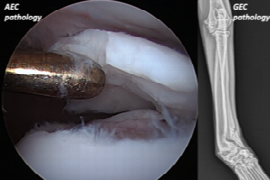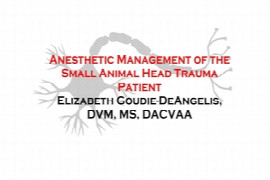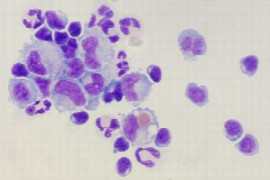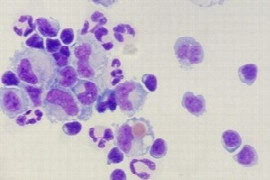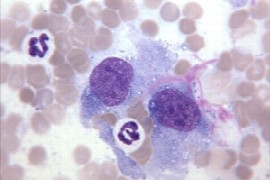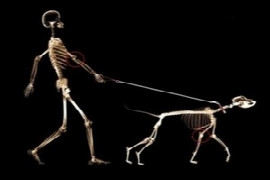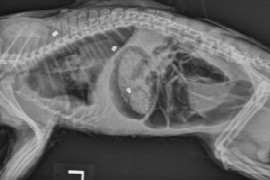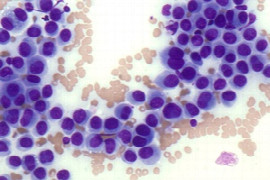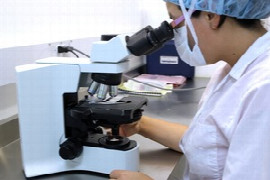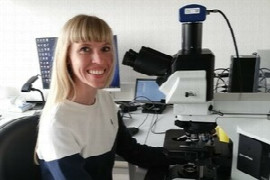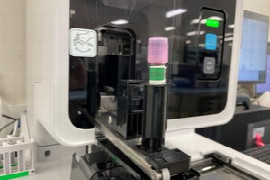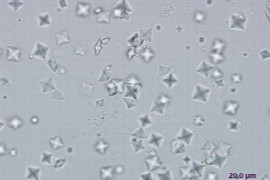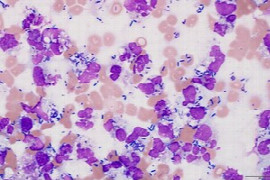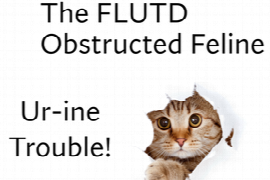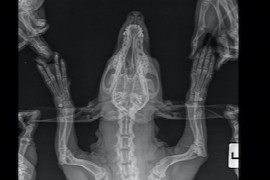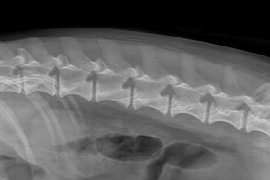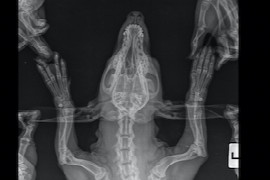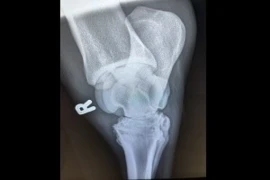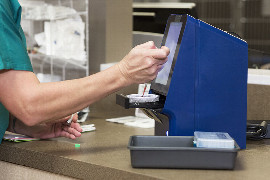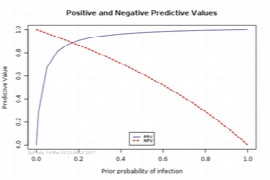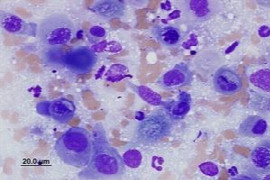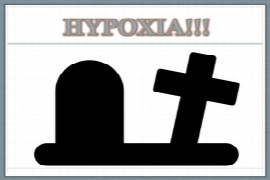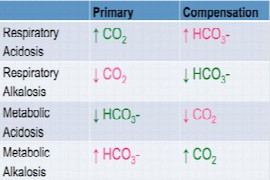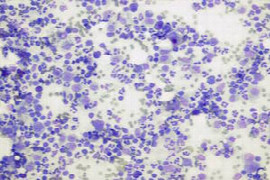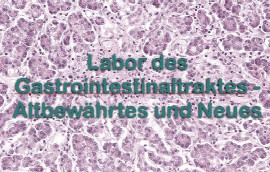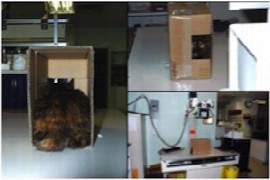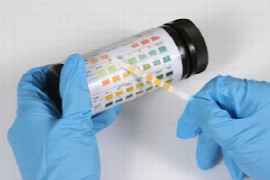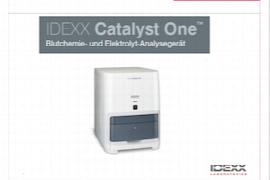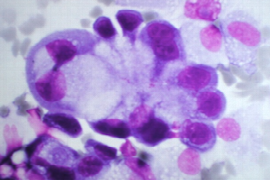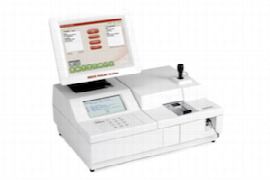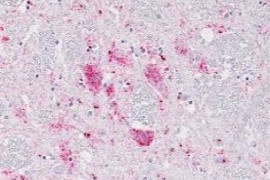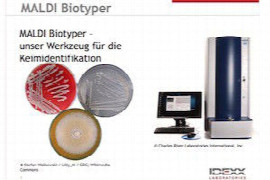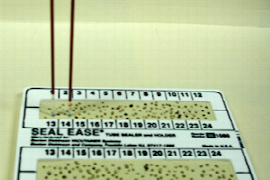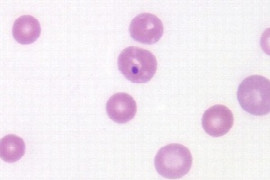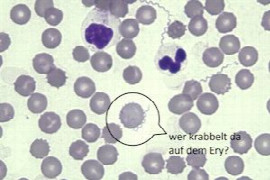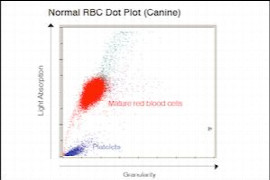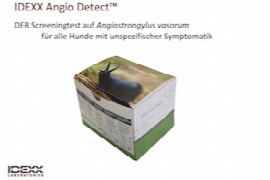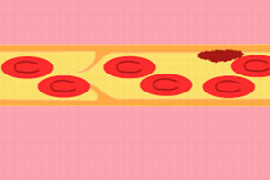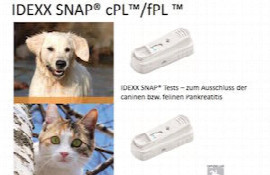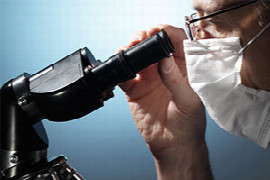Search result for "pathologie" (46 articles)
Canine Epiphyseal Disease
The epiphysis is located at either end of long bones and is evident within the fetus approximately four weeks post conception. During growth, the epiphysis is comprised of specialized cartilage, including articular epiphyseal cartilage (AEC) and growth plate epiphyseal cartilage (GEC), together accounting for longitudinal growth of long bones. In maturity, most of the epiphyseal cartilage is replaced with trabecular bone, encased in a thin shell of cortical bone with hyaline cartilage persisting at the joint surface.
Epiphyseal pathology sustained during growth can have profound lifelong consequence. This webinar reviews common epiphyseal pathologies, including articular and growth plate osteochondrosis and epiphyseal trauma. A focus on diagnosis, treatment and expected outcomes with practical tips and tricks for use in your practice is presented.
Duration:
1:05 h
Speaker:
Ricky Cashmore
from 1
US$ 46.20
(incl. tax)
(incl. tax)
Anesthetic Management of the Head Trauma Patient for Veterinary Nurses
In this webinar, attendees will learn the pathophysiology of an increased intracranial pressure; in particular increased intracranial pressure secondary to traumatic brain injury. Further, they will learn strategies to ensure optimal perianesthetic care for these patients is achieved.
Increased intracranial pressure is, unfortunately, not uncommon in the veterinary field. Whether secondary to traumatic brain injury, intracranial lesion, or cerebral ischemia, these patients offer a challenging management picture particularly when general anesthesia is required. For many of these pets, general anesthesia and/or sedation is needed for imaging and diagnostics as well as supportive care (e.g. mechanical ventilation). Without general anesthesia these patients have an increased risk of morbidity and mortality, this is even more of a risk in the perianesthetic period.
It is important that not only are the appropriate steps undertaken to ensure appropriate anesthetic management but that other comorbidities that can be present with trauma, vascular events, or intracranial lesions are considered and treated as well.
Management of these patients can be complicated but does not need to be intimidating. By considering and treating the pet for its pathologies we can minimize the adverse effects of anesthetic agents while still ensuring that the best level of diagnostics and care can be performed safely.
Duration:
0:41 h
Speaker:
Elizabeth Goudie-DeAngelis
from 1
US$ 46.20
(incl. tax)
(incl. tax)
CSF evaluation - Cytology and Infectious Disease Diagnostics
Evaluation of CSF is an important diagnostic tool for assessment of patients displaying neurological abnormalities. Basic cytological evaluation of CSF includes determination of the total and differential leukocyte counts and protein concentration. In addition, other cytological abnormalities including atypical or neoplastic cells, infectious agents or evidence of haemorrhage may be identified. Pre-analytic variables, clinical signs and species variations must be taken into consideration when interpreting cytological findings. Characterising the type of inflammatory response can help to clarify the underlying pathological processes. Identification of infectious agents can be achieved using a number of methodologies and is a vital component of accurate diagnosis and treatment of neurological disease.
Duration:
0:47 h
Speaker:
Leanne Twomey
from 1
US$ 46.20
(incl. tax)
(incl. tax)
CSF evaluation - Cytology and Infectious Disease Diagnostics (for Nurses)
Evaluation of CSF is an important diagnostic tool for assessment of patients displaying neurological abnormalities. Basic cytological evaluation of CSF includes determination of the total and differential leukocyte counts and protein concentration.
Duration:
0:53 h
Speaker:
Leanne Twomey
from 1
US$ 46.20
(incl. tax)
(incl. tax)
Hot tips on pathology submissions
Diagnostic pathology provides veterinarians with vital information for diagnosis, treatment and monitoring of diseases in animals. There are many things vets can do to help get the maximum benefit from their pathology testing. Ensuring samples are correctly collected, stored and prepared is just as important as test accuracy and helps the laboratory to provide you with accurate and reliable results.
Duration:
0:49 h
Speaker:
Leanne Twomey
from 1
US$ 46.20
(incl. tax)
(incl. tax)
The Anatomy of the Elbow - relearn and apply it!
Let us revise the anatomy of the canine elbow and use this knowledge to understand and easily identify relevant deviations to normal.
Duration:
1:04 h
Speaker:
Maria Munz
from 1
US$ 46.20
(incl. tax)
(incl. tax)
Veterinary Forensic Investigations
Attendees will learn about the different types of animal cruelty and how veterinarians can assist during an animal cruelty investigation.
Duration:
0:50 h
Speaker:
Adam Stern
from 1
US$ 46.20
(incl. tax)
(incl. tax)
Evaluation of Cytology Samples for Nurses
Improve your cytology skills and learn how to navigate your way when evaluating the cells on the cytology slides.
Duration:
0:45 h
Speaker:
Brett Stone
from 1
US$ 46.20
(incl. tax)
(incl. tax)
Fundamentals of Cytology for ECC Veterinarians
This webinar will discuss the fundamentals of cytology, with a focus on emergency and critical care scenarios. It will cover topics such as evaluation of blood films, analysis of body cavity effusions and how to obtain a diagnostic FNA. This webinar will be most relevant to veterinarians working in ECC, but will also be of benefit for those in general practice.
Duration:
0:41 h
Speaker:
Rebekah Liffman
from 1
US$ 46.20
(incl. tax)
(incl. tax)
How to get the most out of cytology samples for Nurses
How to get the most out of cytology samples - practical tips around sample collection and processing
Duration:
0:50 h
Speaker:
Laureen Peters
from 1
US$ 46.20
(incl. tax)
(incl. tax)
In-house Blood Tests - Artefacts and Interferences (for Nurses)
Gain understanding in how blood tests results may be affected by artefacts and interferences
Duration:
1:00 h
Speaker:
Brett Stone
from 1
US$ 46.20
(incl. tax)
(incl. tax)
Approach to Fever of Unknown Origin
This webinar will touch on the physiology of fever and the diagnostic work-up to consider for a patient with fever.
Duration:
1:09 h
Speaker:
Melissa Claus
from 1
US$ 46.20
(incl. tax)
(incl. tax)
What Is That - Unravelling the Mysteries of Urine Sediment for Nurses
Preparation and microscopic evaluation of urine sediment.
Duration:
0:42 h
Speaker:
Natalie Courtman
from 1
US$ 46.20
(incl. tax)
(incl. tax)
Pathology - Microscope Technique - Cell Morphology and Interpretation for Nurses
The correct use of the microscope is important to optimize microscopic visualisation of cytology specimens. Cell identification is useful in diagnosing and ruling out certain conditions, narrowing the list of differential diagnoses.
Duration:
0:53 h
Speaker:
Astrid Oscos Snowball
from 1
US$ 46.20
(incl. tax)
(incl. tax)
The FLUTD Obstructed Patient - Ur-ine Trouble!
This webinar will take you through the emergency presentation and stabilisation for the FLUTD-Obstructed Feline aka the 'blocked cat'.
Duration:
0:50 h
Speaker:
Laura Bennington
from 1
US$ 46.20
(incl. tax)
(incl. tax)
Artefakt oder Pathologie? - Fallbeispiele zu praktischen Anwendungsfehlern bei Röntgenuntersuchungen
Wie gelingt das perfekte Röntgenbild? So können Unter-oder Überbelichtung, Lagerungsfehler und Röntgenartefakte vermieden werden.
Duration:
1:09 h
Speaker:
Thorsten Rick
from 1
US$ 46.20
(incl. tax)
(incl. tax)
Bandscheibenvorfälle & Co - Der Paraparesepatient in der Bildgebung
In diesem Webinar wird Ihnen praxisnah das ideale diagnostische Vorgehen bei der Aufarbeitung eines paraparetischen Kleintieres (Hund und Katze) aus Sicht einer Radiologin aufgezeigt.
Duration:
0:58 h
Speaker:
Lena Maria Holbein
from 1
US$ 46.20
(incl. tax)
(incl. tax)
Artefakt oder Pathologie? - Fallbeispiele zu praktischen Anwendungsfehlern bei Röntgenuntersuchungen
Wie gelingt das perfekte Röntgenbild? So können Unter-oder Überbelichtung, Lagerungsfehler und Röntgenartefakte vermieden werden.
Duration:
1:00 h
Speaker:
Thorsten Rick
from 1
US$ 46.20
(incl. tax)
(incl. tax)
Wenn der Bauch zwickt - Bildgebung des Gastrointestinaltrakts von Hund & Katze
So erkennt ihr Magendrehung, Ileus, Invagination & Co auf dem Röntgenbild.
Duration:
2:16 h
Speaker:
Irene Bruckner, Carina Strohmayer
from 1
Free
VETOPIA Equine Community
The first VETOPIA Equine Community Event is taking place virtually as the face-to-face event was unfortunately cancelled due to airport and railway strikes in Germany. It is now open to all interested equine veterinarians. From bone spavin to back pain to TMJ, our two speakers Nathalie Ann Reisbig and James Carmalt will provide comprehensive knowledge for the equine practice in a total of 6 lectures. Don't miss this unique opportunity to take part in this webinar!
Duration:
3:23 h
Speaker:
James Carmalt, Nathalie Ann Reisbig
from 1
Free
Apport diagnostique des examens complémentaires non cytologiques
Les examens complémentaires immédiats sont faciles à réaliser, peu onéreux et très riches d’informations. Ils sont la clé de très nombreuses consultations de dermatologie. Cependant, malgré leurs apparentes facilités de réalisation, la sensibilité et la spécificité de ces tests peuvent varier suivant la technicité de réalisation et la qualité de la lecture.
Venez découvrir ou redécrouvrir ces examens à effectuer quotidiennement dans vos structures !
Duration:
1:08 h
Speaker:
Vincent Bruet
from 1
US$ 46.20
(incl. tax)
(incl. tax)
Approach to avian and reptile clinical pathology
Sue has had a long term interest in avian and reptile medicine as well as clinical pathology and understands the challenges that these species can present in general practice. Achieving good diagnostic samples can be challenging in some species, whether limited by size or demeanour of patient or by the limitations of running samples on commonly available analysers.
In this seminar, Sue will present an approach to the individual sick patient including suitable sites and volumes of sample collection, manual and automatic analysis methods, and a guide to interpretation of results. The fundamentals of faecal evaluation, haematology and biochemistry will be discussed including common issues with sample collection, dealing with small samples, artefacts and the challenge of identifying suitable reference intervals.
Duration:
0:56 h
Speaker:
Sue Jaensch
from 1
US$ 46.20
(incl. tax)
(incl. tax)
Putting Pathology Results into Perspective
There are ever increasing numbers/proportions of samples that are being sent to external pathology laboratories requesting non-interpreted profiles. The generated results must then be interpreted (and acted upon) by the veterinary clinician and consequently, clinicians MUST have a thorough understanding of both how ‘abnormal’ results can occur, whilst simultaneously assessing the relevance of both normal and abnormal test results.
It is important to maintain a reasonable level of scepticism about any laboratory results that do not fit with the patient and clinical picture: Do not just believe all the numbers. Unexpected results are not uncommon and may necessitate clinical re-evaluation. Alternatively, unexpected results may be erroneous or misleading. Trends over several serial samples may be more informative than single results. Every test result needs to be evaluated carefully. Negative and positive predictive values should be considered for each result and clinical setting.
Duration:
0:48 h
Speaker:
Brett Stone
from 1
US$ 46.20
(incl. tax)
(incl. tax)
In house cytology of skin masses- tips and tricks
Have you been frustrated by your cytology samples and getting the right cytologic diagnosis? Here is your opportunity to develop those skills. This webinar will outline the tips and tricks to getting a cytologic diagnosis. We will start with how to increase your chances of a diagnostic quality sample – covering sample collection and preparation. We follow with an outline of a systematic approach to evaluation of cytologic specimens – identifying inflammation versus neoplasia and criteria of malignancy, and categorization of neoplasia as epithelial, mesenchymal, round cell, and neuroendocrine. We will then explore some of the exceptions to our cytology rules and guidelines of when to seek out help from an expert. All complemented with lots of pictures of clinical cytology specimens.
Duration:
0:51 h
Speaker:
Natalie Courtman
from 1
US$ 46.20
(incl. tax)
(incl. tax)
Physiology of the respiratory system in daily clinical life (for nurses)
This webinar will help to obtain a broad knowledge about the anatomy and functional anatomy of the upper and lower respiratory tract in order to better understand the complex physiology of ventilation. What does the animal breathe, why does it breathe, how much does it have to breathe, what happens if it stops breathing?
Duration:
0:38 h
Speaker:
Muriel Sacks
from 1
US$ 46.20
(incl. tax)
(incl. tax)
Interpretation of Acid Base For Emergency Medicine
Acid-base analysis can be highly informative for identifying a patient's diagnosis as well as understanding dynamic pathophysiological changes in a patient. Correct identification of acid-base problems can also be life-saving. Understanding acid-base changes in a patient can seem challenging at first. This seminar will provide a basic overview of how to break down an acid-base problem into small parts, and will review the red flags that can lead you to the correct diagnosis. The seminar will be case-based and provide plenty of practice in interpreting a range of acid-base and blood gas abnormalities.
Duration:
0:54 h
Speaker:
Lisa Smart
from 1
US$ 46.20
(incl. tax)
(incl. tax)
Cytology Sample Collection, Preparation and Handling (for nurses)
Cytology has many advantages over histopathology, however it also has its limitations. Adequate sample collection, preparation and handling is of upmost importance when it comes to cytological interpretation as it is the veterinarian’s/nurse’s responsibility to not only collect the specimen appropriately, but to also adequately prepare the specimens that are to be presented for cytological examination. Regardless of the experience of the nurse, clinician or veterinary pathologist examining the smears, poor sample collection and preparation will most likely result in interpretations such as; ‘Open’, ‘Equivocal’ or ‘Non Diagnostic’. Improving the quality of cytological submissions will maximise the likelihood of a meaningful cytological description and a more accurate cytological interpretation.
Duration:
0:46 h
Speaker:
Brett Stone
from 1
US$ 46.20
(incl. tax)
(incl. tax)
Labor des Gastrointestinaltraktes - Altbewährtes und Neues
Häufig sind zur Abklärung von GI Erkrankungen invasive Methoden (Biopsie, Endoskopie) erforderlich. In diesem Webinar lernen Sie aber über die nicht-invasiven (Labor-)Methoden, welche ebenfalls bereits wertvolle Hinweise liefern können.
Duration:
0:56 h
Speaker:
Ernst Leidinger
from 1
US$ 46.20
(incl. tax)
(incl. tax)
Optimising X-ray Acquisition in the Emergency Setting
When you have an emergency case, rapidly obtaining quality radiographic images can be challenging. This webinar will provide a review of techniques to obtain radiographs in emergency cases and ways to optimise image quality in difficult scenarios. Common emergency imaging studies will be discussed, including positioning tips and tricks.
Duration:
0:40 h
Speaker:
Alana Rosenblatt
from 1
US$ 46.20
(incl. tax)
(incl. tax)
Urinalysis – a review (for veterinary nurses)
This webinar will review the components that make up the urinalysis procedure, and discuss what urinalysis abnormalities tell us about the health of the patient.
Duration:
0:58 h
Speaker:
Bradley Galgut
from 1
US$ 46.20
(incl. tax)
(incl. tax)
Duration:
0:05 h
Speaker:
Steffen Schmidt
from 1
Free
Pitfalls of Cytology
Cytology is a useful clinical tool for investigation of disease processes, however like all diagnostic procedures there are associated pitfalls. Cytology should be considered a guide. Characteristics of the cells may not be sufficient in many in-stances to yield a definitive diagnosis or indicate the probable behaviour of the lesion. These may require examination of the overall architecture of the tissue, for which cytology is not appropriate. Richard will be discussing the tricks and traps of cytology and giving an overall understanding of its uses.
Duration:
1:08 h
Speaker:
Richard Ploeg
from 1
US$ 46.20
(incl. tax)
(incl. tax)
Gut kombiniert ist halb gewonnen - Interpretation der Blutchemie bei Hund und Katze
Diagnostik vor Ort ermöglicht einen besseren Versorgungsstandard für die Patienten. Hier finden Sie die Erklärung zu Veränderungen in der Blutchemie.
Duration:
1:23 h
Speaker:
Stephanie Nather
from 1
US$ 46.20
(incl. tax)
(incl. tax)
Wenn die Katze abmagert - Welche Laborwerte helfen weiter?
Ein unspezifisches Symptom - viele Differenzialdiagnosen. Wie sieht eine zielgerichtete labordiagnostische Aufarbeitung aus? Welche Parameter liefern die entscheidenden Hinweise?
Duration:
1:08 h
Speaker:
Stephanie Nather
from 1
US$ 46.20
(incl. tax)
(incl. tax)
Labor - finanzielle Aspekte
Dieses Webinar beschäftigt sich mit den Fragestellungen wie die Kostenkalkulation beim Verrechnen externer Laborbefunde erfolgen soll, aber auch die Kalkulationsvorschläge zur Berechnung wann sich die Anschaffung von praxisinternen Analysegeräten rechnet bzw. wie der Verkaufspreis von praxisinternen Laboruntersuchungen kalkuliert werden kann.
Duration:
1:02 h
Speaker:
Herwig Hampel
from 1
US$ 46.20
(incl. tax)
(incl. tax)
Immunohistochemistry: when to use it and why
Immunohistochemistry is an integral technique in many veterinary laboratories for diagnostic and research purposes. In the last decade, the ability to detect antigens (Ags) in tissue sections has improved dramatically. The variable behaviour of mast cell tumours and melanomas in dogs makes it difficult for many veterinary practitioners to offer their clients an accurate prognosis and the best treatment.
Knowing when Immunohistochemistry should be used and why Pathologists request it will be outlined in detail by Lorna.
Duration:
0:43 h
Speaker:
Lorna Rasmussen
from 1
US$ 46.20
(incl. tax)
(incl. tax)
Duration:
0:05 h
Speaker:
Dagmar Nölkes
from 1
Free
Haematology for Emergency Veterinarians - Part 2
This seminar will outline a systematic approach to investigation of causes of anaemia, and to changes in the leukogram and in platelet numbers.
Duration:
1:25 h
Speaker:
Bruce Parry
from 1
US$ 46.20
(incl. tax)
(incl. tax)
Haematology for Emergency Veterinarians - Part 1
This seminar will review the production of erythrocytes, leukocytes and platelets in dogs and cats and techniques for their evaluation in a blood sample. It will then outline a systematic approach to investigation of causes of anaemia, and to changes in the leukogram and in platelet numbers.
Duration:
1:17 h
Speaker:
Bruce Parry
from 1
US$ 46.20
(incl. tax)
(incl. tax)
Über- oder unterbewertet? Die Lyme-Borreliose bei Tieren
Über- oder unterbewertet? Die Lyme-Borreliose bei Tieren - brandneues zu Prävalenz und Diagnostik bei Tieren im Vergleich.
Duration:
1:10 h
Speaker:
Nikola Pantchev
from 1
US$ 46.20
(incl. tax)
(incl. tax)
Laserdurchflusszytometrie für die inhouse Diagnostik
Dot Plots (Punktdiagramme) sind die visualisierte Darstellung des vollständigen Blutbildes.
Duration:
0:49 h
Speaker:
Barblin Altherr
from 1
US$ 46.20
(incl. tax)
(incl. tax)
IDEXX Angio Detect
Der Screeningtest auf Angiostrongylus vasorum für alle Hunde mit unspezifischer Symptomatik.
Duration:
0:38 h
Speaker:
Andrea Pose
from 1
Free
Won’t clot! Why not?
This webinar will provide a practical approach to the clinical diagnosis of disorders of coagulation and briefly review treatment options.
Duration:
1:12 h
Speaker:
Bruce Parry
from 1
US$ 46.20
(incl. tax)
(incl. tax)
IDEXX SNAP® cPLTM/fPL TM
IDEXX SNAP® Tests – zum Ausschluss der caninen bzw. felinen Pankreatitis.
Duration:
0:08 h
Speaker:
Andrea Schweinitz
from 1
Free
Hémogramme plaquettaire
Évaluation des altérations qualitatives et quantitatives de cette ligne avec référence spéciale aux troubles de la coagulation et des saignements.
Duration:
1:03 h
Speaker:
Vanessa Turinelli
from 1
US$ 46.20
(incl. tax)
(incl. tax)
Duration:
0:50 h
Speaker:
Vanessa Turinelli
from 1
US$ 46.20
(incl. tax)
(incl. tax)
